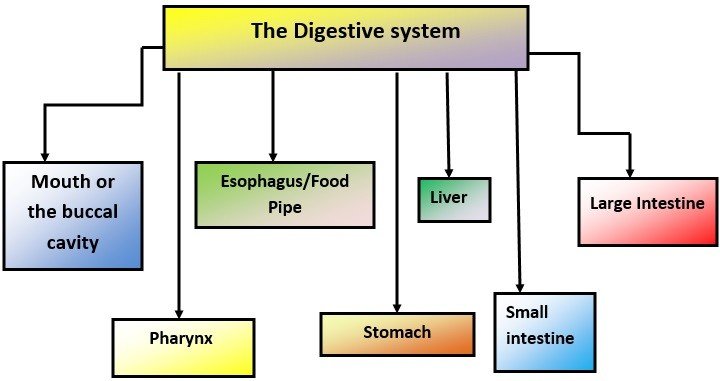FOCUS QUESTION: What are some of the systems in my body and how do they work?
Content Summary
A system is a set of organs linked together and
working together to carry out a set of related functions. The digestive system
includes major organs like the mouth, oesophagus, stomach, small intestine and
large intestine. The digestive system helps to break down food into a form that
the body can find useful. Digestion is the process of breaking down food into nutrients. The digestive
system is made up of a long tube called the alimentary canal, which starts at the mouth and ends at the anus. This tube is long enough to give
the food sufficient time to be broken
down, digested and absorbed into the blood stream.
Digestion starts when food is placed into our mouth. The teeth cut and grind the food. When it is chewed it's mixed with saliva which contains an
enzyme which changes starch into simple sugar. After chewing , the food passes
into the oesophagus or gullet into
the stomach.
After that it moves to the small intestine. The
nutrients are then absorbed through the walls of the small intestine. Undigested
food passes into the large intestine in a semi -solid state then egested through
the anus.

This video clip will explain how the digestive system works.
Take a look at video clip number two.
EXTEND/ELABORATE
Open this link to glean more information on the digestive system.
EVALUATION:
Answer the questions below.
1. Name the organs of the digestive system

EVALUATION:
Answer the questions below.
1. Name the organs of the digestive system
2. Where does digestion begin?
3. What is the function of the tongue in the
digestive system?
Shade the letter that corresponds to the word found in the list above so that the resulting sentence is correct. Use all the options. Some options may be used more than once.
Food enters our body through our (A)¡ (B) ¡ (C) ¡ (D)¡ (E)¡ (F)¡ . From there the food travels to the (A)¡ (B) ¡ (C) ¡ (D)¡ (E)¡ (F)¡ through a narrow tube called the (A)¡ (B) ¡ (C) ¡ (D)¡ (E)¡ (F)¡ . This will then leave the (A)¡ (B) ¡ (C) ¡ (D)¡ (E)¡ (F)¡ and enter the (A)¡ (B) ¡ (C) ¡ (D)¡ (E)¡ (F)¡. The food like matter will move from the (A)¡ (B) ¡ (C) ¡ (D)¡ (E)¡ (F)¡ and enter the (A)¡ (B) ¡ (C) ¡ (D)¡ (E)¡ (F)¡ . The waste material will then leave the body through the (A)¡ (B) ¡ (C) ¡ (D)¡ (E)¡ (F)¡ .
4. Open this link and label the digestive system by dragging the labels on the different organs
4. The list below contains the names of organs
associated with the digestive system.
A.
Small intestine D. oesophagus
B. Stomach E. mouth
C.
Large intestine F. anus
|
Shade the letter that corresponds to the word found in the list above so that the resulting sentence is correct. Use all the options. Some options may be used more than once.
Food enters our body through our (A)¡ (B) ¡ (C) ¡ (D)¡ (E)¡ (F)¡ . From there the food travels to the (A)¡ (B) ¡ (C) ¡ (D)¡ (E)¡ (F)¡ through a narrow tube called the (A)¡ (B) ¡ (C) ¡ (D)¡ (E)¡ (F)¡ . This will then leave the (A)¡ (B) ¡ (C) ¡ (D)¡ (E)¡ (F)¡ and enter the (A)¡ (B) ¡ (C) ¡ (D)¡ (E)¡ (F)¡. The food like matter will move from the (A)¡ (B) ¡ (C) ¡ (D)¡ (E)¡ (F)¡ and enter the (A)¡ (B) ¡ (C) ¡ (D)¡ (E)¡ (F)¡ . The waste material will then leave the body through the (A)¡ (B) ¡ (C) ¡ (D)¡ (E)¡ (F)¡ .
4. Open this link and label the digestive system by dragging the labels on the different organs
1


